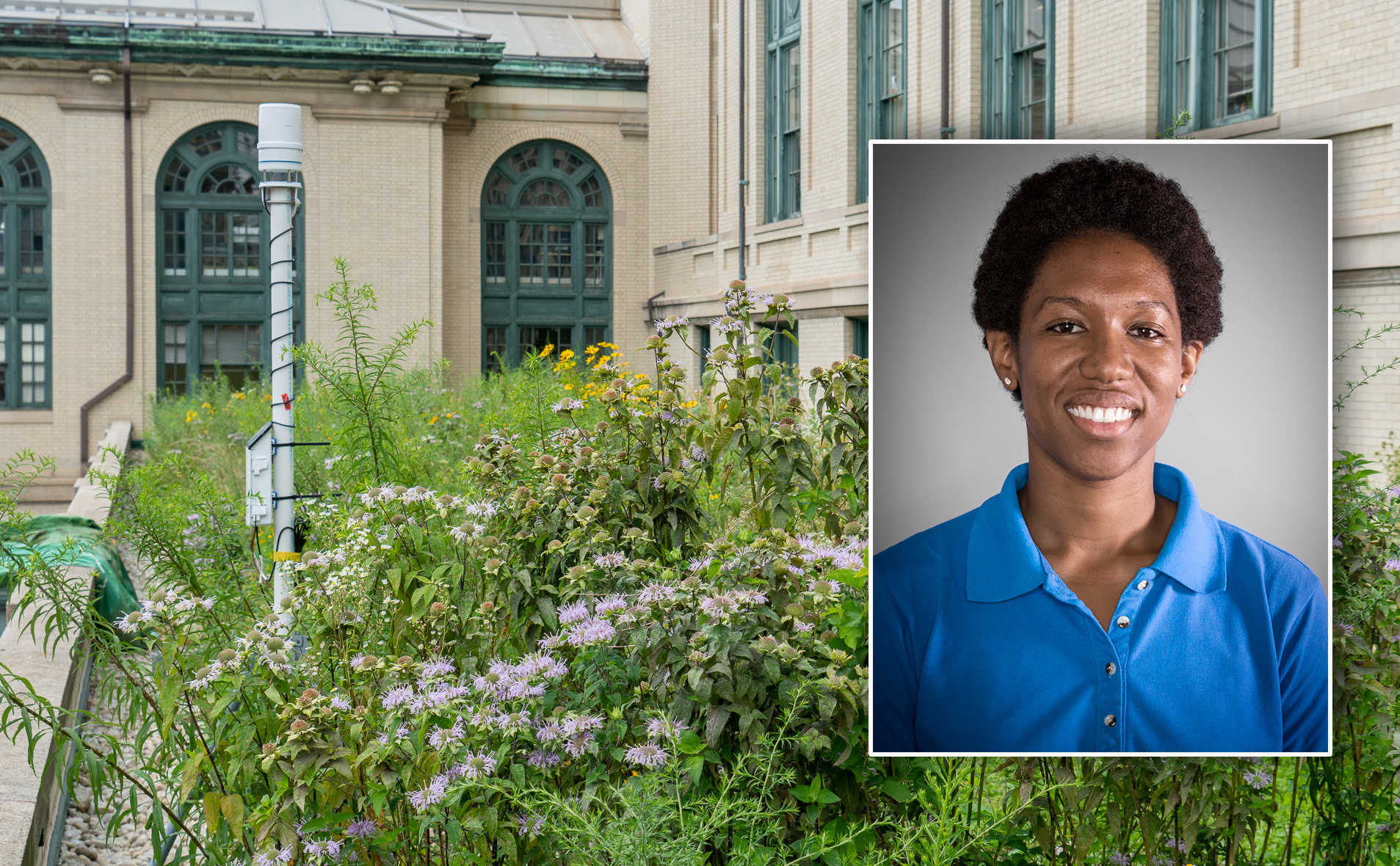
Tracking Runoff: Webber Restarts Stormwater Monitoring at Hamerschlag Hall
Green stormwater infrastructure is designed to mitigate the effects of stormwater runoff, which carries pollutants and toxins into rivers and waterways, and competes for space in sewage drainage systems.Marissa Webber, a CEE master’s student, has taken an interest in finding ways to incorporate human systems for controlling stormwater runoff with natural systems. It is a challenge she observed growing up in Jamaica, seeing the effects of climate change with rising sea levels and increased storm intensities.
Over the summer, Webber has worked with CEE professor Costa Samaras on a project to investigate the performance of green infrastructure as it relates to stormwater runoff. When the green roof was installed on Hamerschlag Hall in 2005, it was equipped with sensors that collected rainfall and runoff data between 2005-2011.
Webber began the project by doing extensive research into the first data collection project at Hamerschlag Hall, as well as reviewing literature pertaining to stormwater runoff and mitigation systems.
New sensors were installed mid-summer and are collecting data, although some tweaking is still necessary, Webber says.
She credits several CEE faculty and staff, the CEE workshop, and people in industry, who worked together to determine which sensors would be best, and ultimately install the sensors once selected.
She will continue to work on the project through the fall, with the hopes of collecting meaningful data, which, when compared with data collected between 2005-2011 will provide useful information about the effectiveness of the green roof.
Taking part in this research project has helped Webber focus on what her future holds. As a result of the work she has done, she has decided she will “almost certainly” pursue a PhD.
“Being involved in this project has helped me to focus on the idea of doing research and work in academics,” she says.